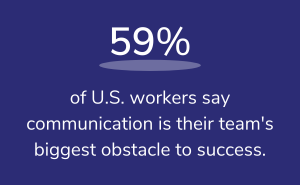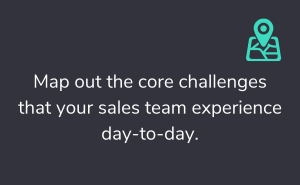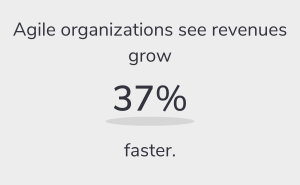You’ve given the green light on your Configure Price Quote (CPQ) project – or you’re not far from it.
Congratulations! You’ll soon be sealing deals and reaping the rewards CPQ can offer your business.
Take 5 times greater growth in revenue year-over-year for starters.
But before you can see these types of results, you need to lay the foundations for CPQ success with a smooth implementation.
With over a decade’s experience implementing our CPQ app for profitable enterprises, we’re here to help you do just that.
Here’s our 7 tips for a successful CPQ implementation.
1. Clearly define your objectives
A lack of clear goals is the most common factor behind project failure, derailing 37% of projects.

So start by defining your project objectives to know what you want to achieve, when you want to achieve it and how.
The SMART goals framework remains a good place to start:
1. Specific – your targets should be defined and well understood
2. Measurable – set out metrics to accurately track the progress of your implementation
3. Achievable – make sure you have the knowledge and resources to reach your goals
4. Realistic – your implementation should be aligned with your business to make sure your objectives are reasonable
5. Time-bound – give your objectives a deadline to minimize delays.
Add clear-cut measurable targets and KPIs to monitor success and benchmark your performance.
Examples of the kinds of KPIs we’re talking about are: increase Average Order Values (AOV) by 10%, reduce average time between opportunity open and close by 15%, or reduce order errors by 25%.
2. Get your people on board
31% of companies cite a lack of a common vision as the main reason projects fail.
So before and during your CPQ implementation, get all of your people on the same page, working towards the same goals.
Start by clearly communicating what changes you’re making and why.
How will it affect day-to-day workloads? What benefits are expected when CPQ is up and running?
59% of U.S. workers say communication is their team’s biggest obstacle to success.

So set clear directions for the future and never assume something is obvious – it might not be to your folks in the firing line.
By getting your people on board it’ll be easier to make efficient decision-making, stay focused on key results, assign responsibilities and provide feedback.
3. Have the right people in place
You need the right skills and experience to successfully implement your CPQ platform.
So, what combination of people do you want working on a CPQ implementation?
A consultant with experience using the CPQ software, an architect from your vendor and an internal team to support the ongoing implementation of CPQ is a must.
Having services experts on hand from your vendor will speed along the implementation and ensure you’re making the most of the software.

The closer your partnerships, the better results you’ll see – so find a vendor willing to put skin in the game.
Regular engagement with the vendor’s product management team means you can verify key decisions, stay up-to-date on the latest product changes and get assistance if things don’t go to plan.
4. Ensure seamless integration with your other systems
For your CPQ implementation to be a success, it will need to seamlessly integrate with your other essential systems.
If there’s any disconnect, you run the risk of using incomplete or inaccurate data, which will immediately nullify a lot of the benefits you’d expect from a CPQ solution.
Most vitally, your CPQ needs to integrate with your Customer Relationship Management (CRM) system. That way you have all customer and commercial data in a single place.
You’ll see real improvements in accuracy and speed because your sales team won’t have to switch between systems and juggle data. Better still, you’ll have a 360-degree view of your customer, making it easier to provide a smooth and personalized cx.
Your CPQ will also need to integrate with downstream systems, including billing, to ensure accurate reporting and the smooth fulfillment of the entire customer lifecycle.
5. Deliver a Minimum Viable Product (MVP)
With an MVP you can learn quickly about what works well for your business and what doesn’t.
You can capture data about user experience and get your sales people using the platform ASAP.
Based on your information and feedback, you can continue with, cut, or iterate on certain features of your CPQ so it provides maximum value.

That way, you won’t find yourself down the line having wasted huge amounts of time, money and resources.
An MVP will also help convince key decision makers of your CPQ implementation’s value early on, giving your project momentum and driving revenue sooner rather than later.
6. Make sure your users are happy
A slow, clunky or confusing CPQ application will only frustrate your sales team and make them revert to their classic spreadsheets.
Before you implement your CPQ, understand and map out the core challenges that your sales team experience day-to-day.

Is it inaccurate quotes? A lack of upsells/cross-sells? Poor visibility of customer data?
Focus on setting your project goals that will overcome these problems straight off the bat.
And when you deliver your MVP, prioritize your sales team and their feedback.
7. Mandate an agile CPQ implementation
98% of organizations say they’ve experienced success with an agile project.
And agile organizations completed 75% of their goals, versus 56% for non-agile, and even grew their revenue 37% faster.

An agile implementation is a flexible approach to project management that prioritizes incremental sprints.
Agile lets you progress through your implementation hitting checkpoints along the way. This means you can course-correct mistakes and prioritize the most important parts of your CPQ.
With an agile implementation, you can incorporate feedback at every stage, respond faster to internal/external changes, improve efficiency and have the flexibility to avoid any roadblocks.
Over to you
To summarize, the success of your CPQ implementation depends on having the right people, the right tools and the right strategy in place.
With only 16% of digital transformation projects defined as a success, it’s no mean feat.
But the rewards of a fully functioning CPQ application – including streamlined sales processes, greater profits and improved customer satisfaction – will make it well worth your while.
Want more CPQ info and insights? Check out our free definitive guide to Configure Price Quote.














-1.png?width=300&name=Get%20your%20guide%20(7)-1.png)



